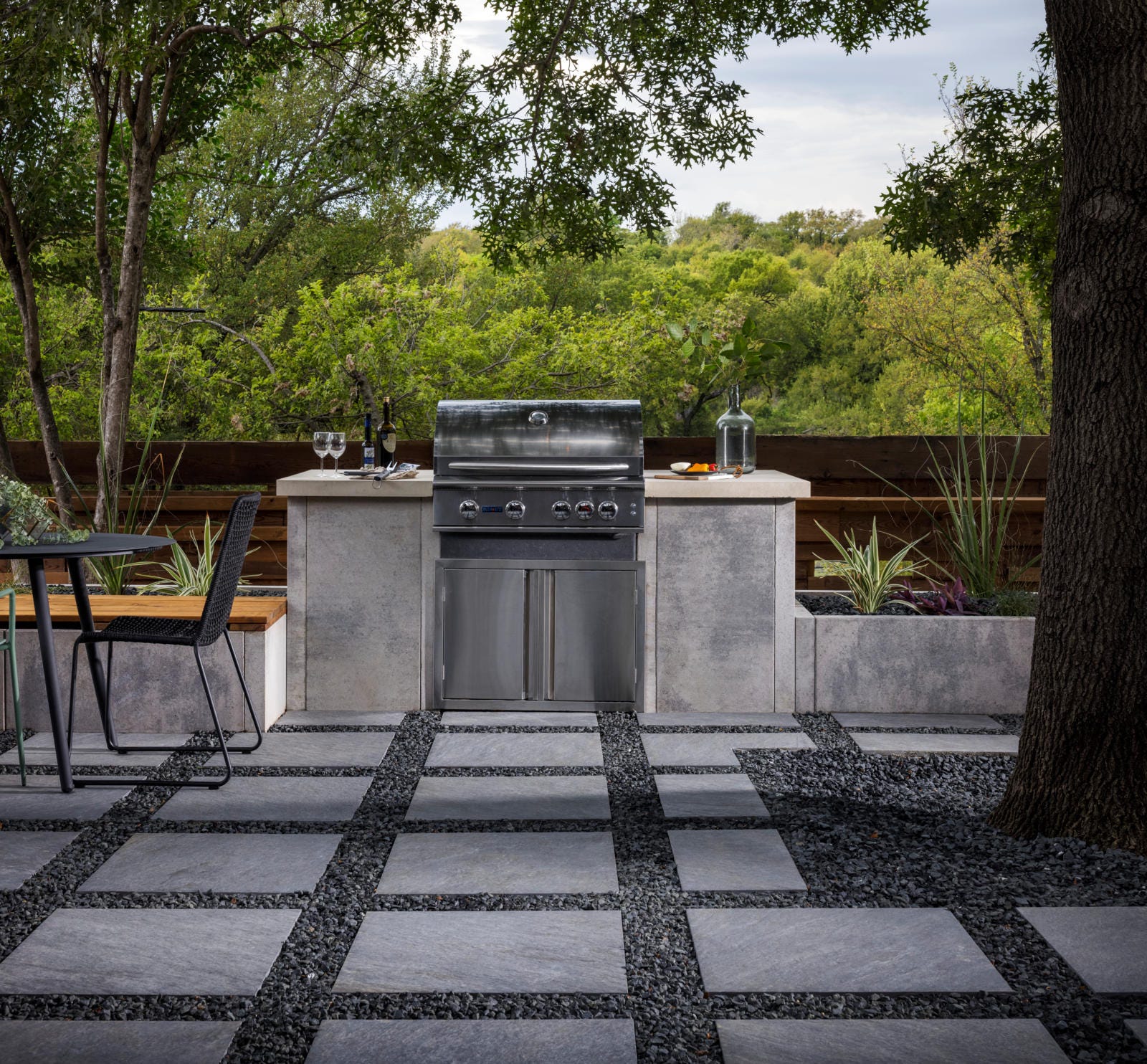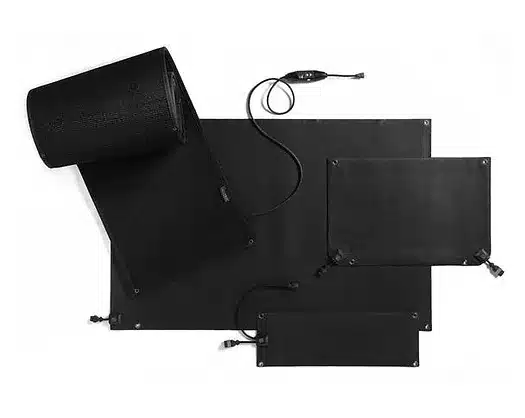From sizzling summer barbecues to brisk winter grilling sessions, the concept of an all-season outdoor kitchen is transforming backyard living across Canada. Whether you are designing a space for warm summer evenings or frosty winter afternoons, an outdoor kitchen can provide year-round cooking, entertaining, and enjoyment. Suppose you are exploring options for Calgary outdoor kitchens and Outdoor kitchens in Calgary. In that case, this guide will help you plan thoughtfully and build a space that works through every season, regardless of weather or temperature.
Why an all-season outdoor kitchen makes sense in Canada
Building an outdoor cooking space that functions across summer, fall, winter, and spring offers multiple benefits. First, it expands your usable living space beyond indoor walls into the fresh air, giving you new ways to gather, cook, and dine. Secondly, in Canadian climates with distinct seasons, having an outdoor kitchen designed for all-season use means you get more value and enjoyment, rather than treating the space as seasonal only. According to a home-living guide, outdoor kitchens significantly increase home value and enhance outdoor living. In regions like Alberta, where winters are cold and summers are warm, designing durable, weather-resistant kitchens is particularly important. Whether you are shopping for Calgary outdoor kitchens or wider Canadian options, focusing on materials, layout, and insulation will ensure your space remains functional even when snow or frost arrives.
Outdoor kitchens in Canada: Planning for every season: design considerations
Choose the right location and orientation
When you plan your outdoor kitchen, select a spot that balances exposure and protection. Ideally, the area should be near your house for convenience yet somewhat sheltered from prevailing winds, especially in winter. The proximity to the home supports easier access to utilities and storage, particularly beneficial if you are building an Outdoor kitchen in Calgary or similar urban backyards. Shade and sun also matter: in summer, you may prefer shelter from direct midday heat, while in winter, you may want good sun exposure to help moderate the temperature. Look for natural protection or design elements such as pergolas, overhangs, or wind-breaks to help make year-round usage comfortable.
Select durable materials and weather-ready appliances
Since Canadian seasons can be harsh, your outdoor kitchen must stand up to extremes of cold, snow, rain, UV exposure, and thaw cycles. Materials such as stainless steel appliances, concrete or stone countertops, and frost-proof cabinetry are wise choices. For example, a stainless-steel grill and weather-rated fridge give you reliable performance; a sealed stone or concrete surface resists cracking and weather damage. Choosing items rated for Canadian outdoor use means less worry about winter corrosion or summer heat warping.
Integrate utility and infrastructure for year-round cooking
Your outdoor kitchen layout must incorporate key infrastructure: gas or propane for grills, electrical outlets for lighting and accessories, plumbing for a sink, drainage for any melt or rain water, and storage that protects tools and ingredients from the elements. A good planning guide emphasizes preparing for all of these utilities ahead of time. Additionally, consider how you will address winter use: will the fridge remain outdoors? Will you need protective covers, frost-free cabinets, or a roof structure to shed snow? Including lighting, heating and seating so the space can be used into the evening or cooler seasons will make it truly all-season.
Must-have features for an outdoor kitchen that works in winter and summer
High-quality grill and cooking surfaces
The grill is the heart of the outdoor kitchen. Choose a model suitable for Canadian weather and designed for year-round use. Whether gas, charcoal or hybrid, ensure the unit is durable, well-insulated and designed for outdoor exposure. The body should be corrosion-resistant and the components capable of quick heat up even in cooler ambient temperatures. A secondary burner, pizza oven or smoker can add versatility and allow you to cook different dishes across seasons – from burgers in July to slow-roasted meats in December.
Prep, sink and storage area
A spacious countertop of stone or concrete gives you proper workspace for meal preparation, whether seasoning steaks in August or prepping vegetables in March. Also include a sink and running water if possible, for easier cleanup after cooking outdoors. Storage cabinets—weather-proofed—help keep utensils, tools, and accessories safe from snow, ice, and moisture. Refrigeration near the outdoor kitchen helps you store beverages, ingredients, or leftovers without needing to run back and forth to the indoor kitchen. For all-season use, an outdoor-rated fridge is ideal.
Comfortable dining and protection from elements
To turn your outdoor kitchen into a true living space, include comfortable seating, appropriate lighting for evenings, and protection from the elements. In summer, you may need shade structures or misting systems; in winter, wind protection, heated lamps, or a fire feature can extend use. Integrating a roof, pergola, or covered patio helps shed snow and keep the space usable even after a storm. Fabrics, cushions, and finishes should be rated for outdoor winter use or easily removable.
Seasonal maintenance and smart tips
Summer maintenance
Once the snow is gone, prepare your outdoor kitchen by cleaning off spring dust, checking gas lines or fuel sources, cleaning the grill thoroughly, and inspecting countertops for any freeze-thaw damage. Make sure lighting works and seating is ready for evening meals. In summer, use shade or umbrellas to ensure comfort.
Transition to cooler weather
As fall approaches, continue to use the space but begin checking weather-proofing: inspect seals on appliances, clear gutters or overhangs, bring in cushions or fabrics if harsh weather is expected, and add a patio heater or fire feature.
Winter winterization
For use during winter, clear snow and ice from the area, maintain a clear path to the grill, use protective covers on appliances not in active use, and ensure you have lighting and heating if you plan to cook when the sun sets early. Consider an enclosure or temporary wind shield to make cooking in colder months feasible.
Spring preparation
When snow melts, inspect for any damage from freeze-thaw, check stone or concrete surfaces for cracks, examine gas lines and drains, and perform a full cleanup before heavy use returns in summer.
Why is this especially relevant in Calgary and Western Canada
If you are exploring outdoor kitchens in Calgary, you know the importance of durability and design tailored to Western Canadian climates. Calgary sees extreme temperatures with cold winters and often windy conditions, so designing an outdoor kitchen with weather-resilient materials, proper wind breaks, and snow management is especially smart. A local guide emphasizes the growing popularity of outdoor kitchens in Calgary and the need for materials and appliances suited to that climate. Whether you live in Calgary, Alberta, or another Canadian region with seasonal extremes, the same design principles apply: locate the kitchen thoughtfully, choose materials to last, plan utilities well, and think beyond summer barbecues to year-round use. An all-season outdoor kitchen is more than a summer add-on—it is a year-round extension of your living space, enabling outdoor cooking, dining, and entertaining from the heat of July through the chill of January. With careful planning, durable materials, and smart layout, you can build a space that serves your family in every season.
Whether you focus on Calgary outdoor kitchens or a similar look across Canada, prioritizing weather-resistant design and multi-use functionality will ensure your investment pays off. Embrace outdoor cooking through all four seasons and create a space that becomes the heart of your backyard.

 Cart is empty
Cart is empty 

